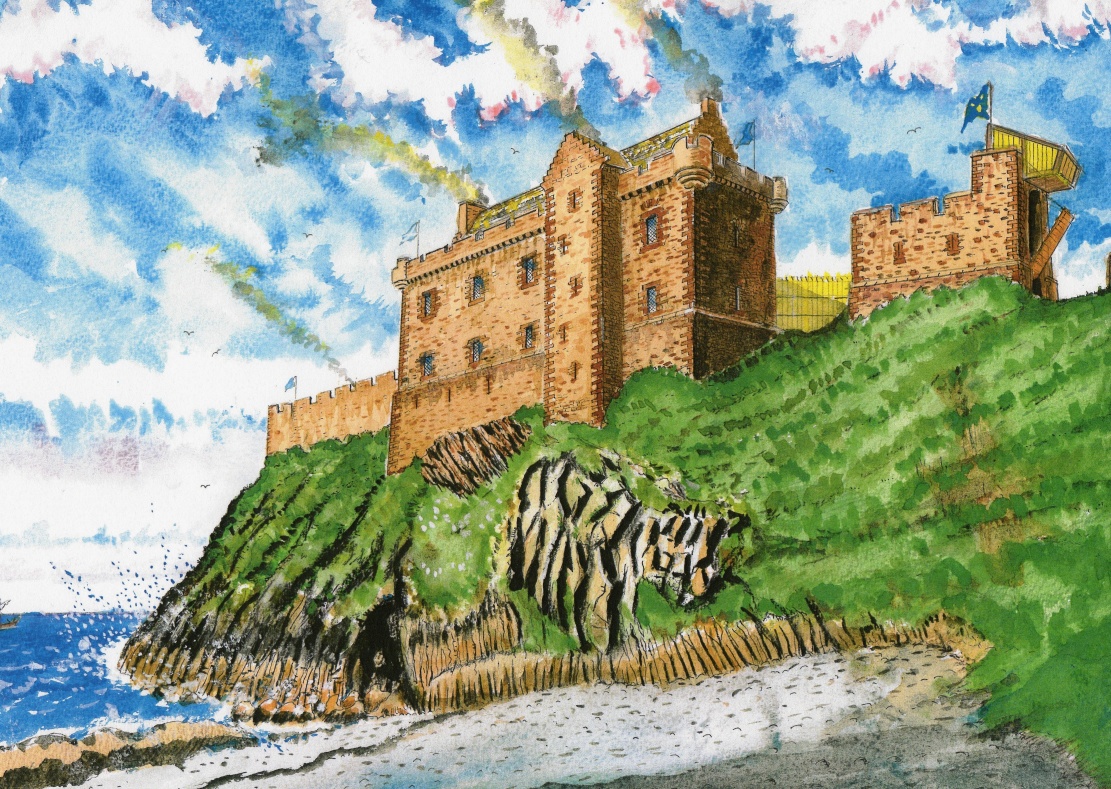Ever since seeing it on a NTS Christmas card, I've wanted to visit Craigievar Castle. Although it has
slightly less going for it as a visitor attraction than
Fyvie,
Brodie or
Crathes castles, thanks to its fairytale appearance and influence on later, Victorian architects, it is the most famous tower house of them all.
.JPG)
To architectural historians like Charles McKean, Craigievar is the apogee of Scotland's indigenous tower house style, the mature, baroque flourishing of a basic defensive form. Unlike other tower houses such as Fyvie or Castle Fraser, it is untouched since the early 17th century, its purity of line uncomplicated by later construction.
.JPG)
It was completed in 1626 by an Aberdeenshire merchant, William Forbes, who made his fortune in the Baltic. Craigievar thus stands as a tangible reminder of a wider and little-known part of Scottish history, the
Baltic diaspora. It is estimated that 40,000 mainly Aberdonian Scots (5% of the Scottish population) emigrated to Poland alone late in the 16th and early in the 17th century, attracted by her uniquely tolerant religious laws. They went as artisans, merchants, and mercenaries. In Poland, serfs were tied to the land and the nobility disdained trade, thus providing opportunities to Germans, Jews and Scots.
.JPG)
And the other merchants disliked the Scots. As well as providing credit, these merchants and peddlars avoided paying tax, undercutting the competition (in Germany today, bargain goods are still advertised as “schottenpreis” – Scottish Price). Town guilds forced them to be based outside of town boundaries. But the Scottish black marketeers operated unmolested, protected by their usefulness to the nobility as mercenaries. For Polish lords considered Scottish infantry better than the native serfs (Spytek Wawrzyniec Jordon, a Polish big cheese, reckoned 2,000 Scots were better by far than 6,000 Poles), and many Scots peddlers happily swapped packs for guns for the right price. By 1632, even Sweden controlled an army of 25,000 mercenary Scots, fighting in Eastern Germany for Gustavus Adolphus' short-lived Swedish empire. The reason this Baltic diaspora is so little known is because the Scots who stayed on integrated fairly quickly, often taking local names, becoming indistinguishable from the native population in a couple of generations.
.JPG)
But people at the time certainly knew about it. When the House of Commons in 1606 debated a possible union of Parliaments the Commons opposed the plan, saying (according to Puritan historian Arthur Wilson):
"If we admit them into our liberties, we shall be overrun with them, as cattle pent up by a slight hedg will spill over it into a better soyl ... witness the multiplicities of the Scots in Polonia."
Or consider the words of
The Rebel Scot, a poem written by royalist John Cleveland during the English Civil War:
Had Cain been a Scot, God would have changed his doom
Not forced him to wander, but confined him at home
And you thought this was going to be a post about the rolling Strathdon countryside, magnificent Jacobean interiors and intricate corbelling bursting exuberantly from a plain defensive base...
.JPG)

.jpg)
.jpg)

.jpg)
.jpg)
.jpg)
.JPG)
.JPG)
.JPG)
.JPG)
.JPG)
.JPG)
.JPG)
.JPG)
.JPG)
.JPG)
.JPG)
.JPG)
.JPG)

.jpg)































